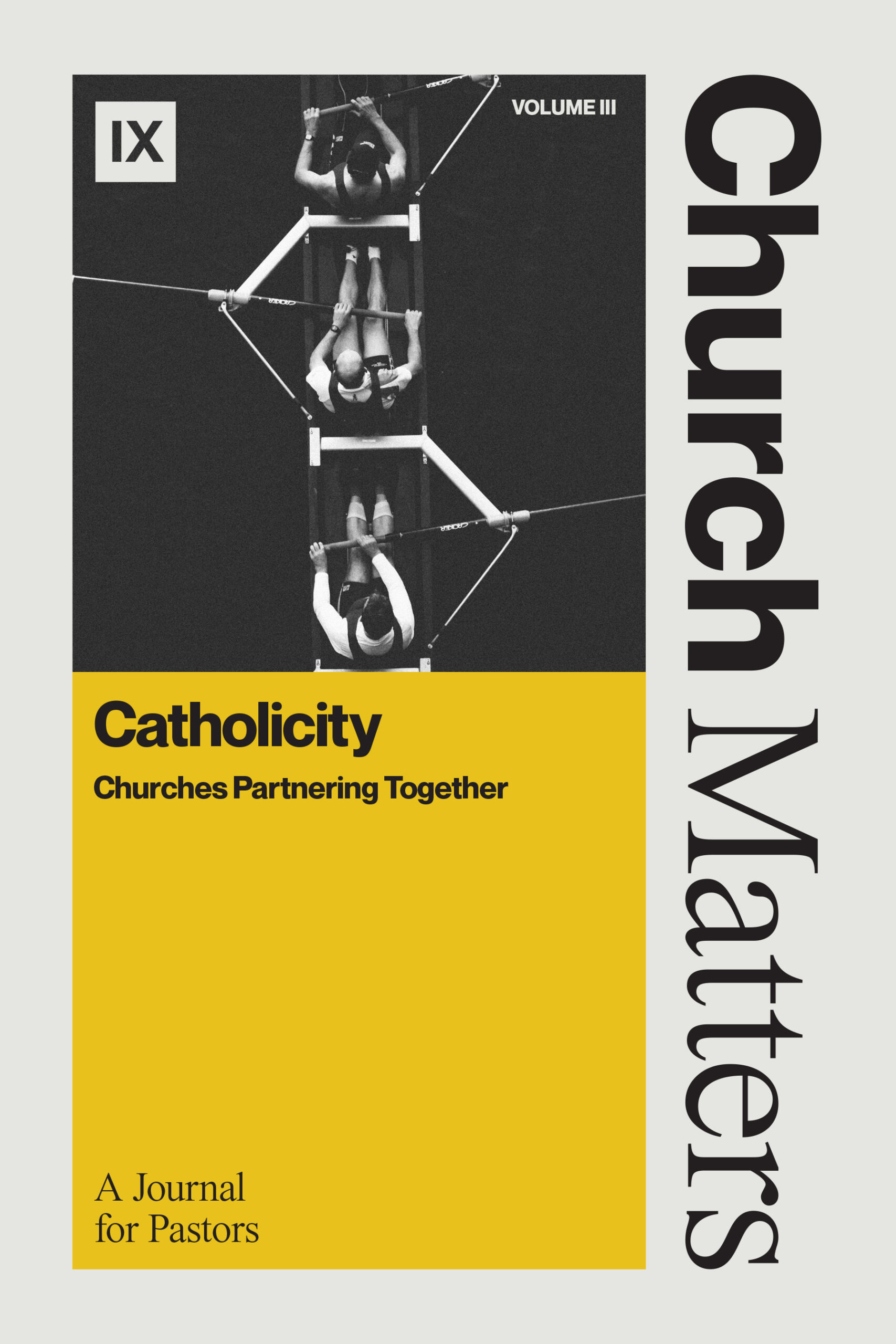Catholicity and the Church Membership Process
I’m confident my church would be at least a little bit larger if not for this one thing I do. When I meet visitors, I often suggest other healthy churches closer to where they live. Some newcomers are so taken aback that I quickly assure them we’d love to see them again. Then I return to praising whatever other pastors and churches I just mentioned.
I don’t do this for show; I genuinely want them to consider these other churches. In doing so, I serve the visitor (they might find a church better suited for them). I instruct our members (we will not compete over saints). And I set the tenor for the membership process at MBC (we are neither the only healthy church in Memphis nor convertible with the church universal).
If all this sounds strange to you—like one car salesman recommending another dealership—this article will not convince you otherwise. The point of this piece is to illustrate how to be catholic in one area of church life: the membership process.
Membership Classes
What is the point of your membership class? You probably walk through your statement of faith and church covenant. You may also add your church’s core values and a mission or vision statement. But why?
No doubt you hope to clarify what your church believes and what you expect from your members. I’m sure you also stress what is distinct about your church—doctrinal, cultural, missional, philosophical, or linguistic. This is normal and necessary: you’re inviting people to consider joining your local church, not some meta-church.
And yet, unless your church embraces radical doctrinal and ecclesiastical discontinuity (i.e., heresy), you have more in common with other gospel-believing churches than not—one Lord and one baptism, one Supper and one mission. Your people also share membership in common with every other saint in the universal church. Whether they realize it or not, they join your local church because they’re already a member of the universal church. Your membership class should reflect this reality.
Unfortunately, too many churches use their membership classes to stress what makes them unique. In doing so, they unwittingly give visitors the impression that their church was planted in a historical and ontological vacuum. But all true churches embrace the faith once delivered for all (Jude 3)—a faith that is preserved by the faithful and articulated in creeds and confessions, a faith that’s been passed on to you and therefore unites you to every other Christian first, and only then to a local assembly.
A membership class that dwells on distinctions can lead to isolated ministry and a haughty disposition. It should instead show true saints that you are a true church because you hold to the church’s true confession. A membership class should also show your church’s commitment to catholicity as you highlight denominational affiliations, pastoral networks, shared mission work, and other things. But catholicity is about much more than denominationalism or local partnerships, as wonderful as both are. They manifest a more profound reality: that the saints have been spiritually united to Christ and his body. This union transcends space and time as saints across redemptive history hold onto and pass down the faith once delivered for all.
Consider how you explain your church’s statement of faith. Our church uses a slightly modified version of the New Hampshire Confession. Before I teach through the document, I explain as simply as possible where this confession stands in the stream of Protestantism. I’m trying to do more than say, “This is what we believe at MBC.” I’m trying to say, “This is what we believe in the context of the church’s history.” Our confession, while more specific at certain points, is nonetheless shared.
Let me be more concrete. I split the articles into four sections (Historical, Evangelical, Congregational, and Baptist). Rather than teaching the articles numerically, I move from the most unifying to the most distinctive. This allows me to stress how much commonality we share with those who claim orthodoxy. I even mention other churches by name. I want prospective members to grasp that we share eighteen of twenty articles in common with Second Presbyterian Church down the street. If you use your statement of faith to bludgeon others or to divorce yourselves from the church’s rich history, then you’ve robbed your people of the joy and treasure of comprehending the incomprehensible love of Christ for saints outside your body (Eph. 3:18–19).
Membership Interviews
Does catholicity stop being a concern after the membership class? No, it should extend even to the membership interview. In fact, a membership interview and the subsequent reception of new members is one of the most natural places to exercise healthy catholicity. Paul regularly commends saints to churches and expects them to heed his instruction (Col. 4:10; Phil. 2:29; Phlm. 17). He also warns churches about false or destructive persons (2 Tim. 4:14–15). Our common Lord, confession, mission, and membership should breed cooperation and trust with other like-minded churches. Working with other local pastors will help you protect your flock and theirs.
I can think of two simple ways to carry out this spirit of cooperation, one during and one after the membership interview. During the interview, unless the person is a new convert, we ask a series of questions:
- Where were you previously a member?
- Have you communicated with their leadership that you intend to leave?
- Have you left your relationships in good order?
If they’re leaving a church in our city, we ask for a summary of why they’re leaving. One fellow pastor asks them the three main reasons they’re leaving that church. The point here is not to encourage gossip. It’s to ensure they’re not fleeing sin or discipline. It’s to ensure our church isn’t undercutting another church’s pastoral care. It’s to kill competition and consumerism.
After the interview, if they’re leaving a faithful gospel-preaching church in our city, we’ll call one of their pastors to see if they know the member is leaving, to ensure they’re not under discipline, and to understand how we can best care for them going forward. If one of our members is leaving us for a faithful church in the city, we do the same thing. We go out of our way to call or email them to let them how why they’re leaving and how they can care for them going forward. And we would warn someone if we needed to.
What drives this impulse? We understand that our members belong first to the universal church and only then to local churches. We take seriously the weight of shepherding souls and the account other pastors must give for their sheep. We recognize we need the help of other Christians and other churches as we all seek to fulfill the Great Commission.
In other words, meaningful membership upholds glad-hearted catholicity. We adhere to the faith once delivered for all, we proclaim that faith through shared confessions, we receive baptized believers, and we trust other churches who are doing likewise. In the end, we strengthen one another and reveal ourselves to be united to Christ’s universal body, not simply to our little assembly.
Related Multimedia

An "American" Question about "American" Ideas
By Ken Mbugua









